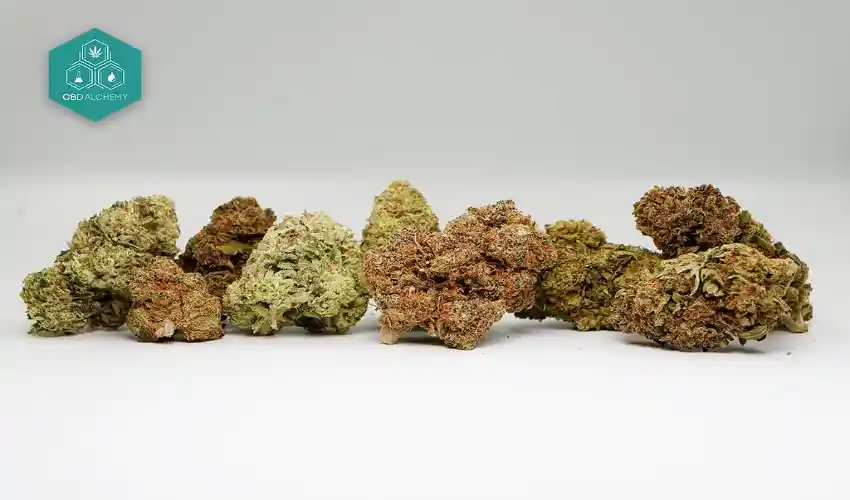Cannabis has been a subject of growing interest and research, primarily due to its two major compounds: CBD (cannabidiol) and THC (tetrahydrocannabinol). These compounds have distinct effects, uses, and legal statuses, making it crucial to understand the differences between CBD and THC flowers. This article will explore their unique properties, benefits, and implications for consumers.
Chemical Composition and Effects
CBD Flowers: CBD Flower are derived from hemp plants, which are legally defined as cannabis plants containing less than 0.3% THC. The primary compound in these flowers is cannabidiol (CBD), a non-psychoactive cannabinoid. This means CBD does not produce the “high” associated with cannabis use. Instead, CBD is renowned for its potential therapeutic benefits, including anti-inflammatory, analgesic, anti-anxiety, and anti-seizure properties.
THC Flowers: THC flowers, on the other hand, come from marijuana plants, which contain higher concentrations of tetrahydrocannabinol (THC), typically ranging from 5% to 30%. THC is the psychoactive component of cannabis that induces euphoria, relaxation, and altered sensory perception. While THC also offers medicinal benefits, such as pain relief, appetite stimulation, and muscle relaxation, its psychoactive effects can be a drawback for some users.
Legal Status
The legal status of CBD and THC flowers varies significantly across different regions.
CBD Flowers: In many countries, including the United States, CBD derived from hemp (with less than 0.3% THC) is legal at the federal level. The 2018 Farm Bill legalized hemp and hemp-derived products, paving the way for widespread CBD use. However, individual states may have additional regulations, and it’s essential for consumers to be aware of their local laws.
THC Flowers: THC flowers are subject to much stricter regulations. In the United States, THC remains classified as a Schedule I controlled substance under federal law, making it illegal. However, many states have legalized medical and/or recreational marijuana, leading to a complex legal landscape. In Canada and several other countries, marijuana is legal for both medical and recreational use, but regulations can still vary.
Therapeutic Uses
Both CBD and THC flowers offer therapeutic benefits, but they are often used to address different conditions.
CBD Flowers: CBD is commonly used to manage conditions such as anxiety, chronic pain, epilepsy, and insomnia. Its anti-inflammatory properties make it popular among individuals with arthritis and other inflammatory conditions. CBD is also being researched for its potential neuroprotective effects, which could benefit conditions like Alzheimer’s disease and multiple sclerosis.
THC Flowers: THC is often utilized for its pain-relieving and muscle-relaxant properties, making it beneficial for conditions like multiple sclerosis, chronic pain, and muscle spasms. It is also used to stimulate appetite in patients undergoing chemotherapy or suffering from conditions like HIV/AIDS. Additionally, THC’s psychoactive effects can help with anxiety and depression in some individuals, though it may exacerbate these conditions in others.
Consumption Methods
The methods of consuming CBD and THC flowers are similar, but the experiences can differ significantly.
CBD Flowers: Common consumption methods for CBD flowers include smoking, vaping, and using them in edibles or oils. Smoking and vaping provide rapid effects, while edibles and oils offer a more prolonged release. The non-psychoactive nature of CBD makes it suitable for daytime use and for individuals who need to remain clear-headed.
THC Flowers: THC flowers are also smoked, vaped, and used in edibles and oils. Smoking and vaping THC provide quick onset of effects, making them suitable for acute symptom relief. Edibles, however, take longer to produce effects but last longer. Due to its psychoactive effects, THC is often used in the evening or when one does not need to engage in demanding tasks.
Side Effects and Risks
Both CBD and THC flowers come with potential side effects and risks, though they differ in nature.
CBD Flower UK: CBD is generally well-tolerated, with side effects being relatively mild. These may include dry mouth, drowsiness, and changes in appetite. CBD can also interact with certain medications, so it’s crucial to consult with a healthcare provider before starting CBD treatment.
THC Flowers: THC can cause more pronounced side effects, particularly at higher doses. These can include dry mouth, red eyes, dizziness, increased heart rate, and impaired memory. Some users may experience anxiety or paranoia, especially if they are sensitive to THC. Long-term use of THC can lead to tolerance and dependence, though it is less addictive than substances like nicotine or opioids.
Conclusion
Understanding the differences between CBD and THC flowers is essential for making informed decisions about their use. While both offer significant therapeutic benefits, they cater to different needs and preferences. CBD’s non-psychoactive nature makes it an appealing option for those seeking relief without the high, while THC’s potent effects can be invaluable for managing severe symptoms. Always consider legal aspects and consult healthcare professionals to ensure safe and effective use of these cannabis products.
